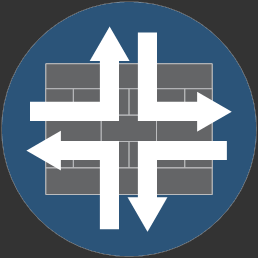
An Overview of OSPF LSA Types
We know that Link State Advertisements (LSA) are the life blood of an OSPF network. The flooding of these updates (and the requests for this information) allow the OSPF network to create a map of the network. This of course occurs with a little help from Dijkstra’s Shortest Path First Algorithm.
But not all OSPF LSA’s are created equal. In this post, we will examine the different types that are used within the OSPF multi area design. In the very next post here at the blog, we will recap how they are dynamically filtered when we have an OSPF domain that consists of special areas like Stub or Totally Stubby.
The Router (Type 1) LSA
We begin with what many call the “fundamental” or “building block” Link State Advertisement. The Type 1 LSA (also known as the Router LSA) is flooded within an area. It describes the interfaces of the local router that are participating in OSPF and the neighbors the local OSPF speaker has established.
The Network (Type 2) LSA
Do you remember how OSPF functions on an Ethernet (broadcast) segment? It elects a Designated Router (DR) and Backup Designated Router (BDR) in order to reduce the number of adjacencies that must be formed and the chaos that would result from a full mesh of these relationships. Well, the Type 2 LSA is sent by the Designated Router into the local area. This LSA describes all of the routers that are attached to that Ethernet segment.
The Summary (Type 3) LSA
Ready for a big difference with this LSA type? Recall that your Type 1 and Type 2 LSAs are sent within an area. We call these intra-area LSAs. Now it is time for the first of our inter-area LSAs. The Summary (Type 3) LSA is used for advertising prefixes learned from the Type 1 and Type 2 LSAs into a different area. Do you recall what device would send such an LSA? Sure, it would be the Area Border Router that separates areas.
So let’s say we have an area design like this – AREA 1-AREA 0-AREA 2. The Area 1 ABR would send the Type 3 LSAs into Area 0. It’s ABR into Area 2 would send these Type 3 LSAs into that area to provide full reachability in the OSPF domain. The Type 3 LSAs remain Type 3 LSAs during this journey, it is just OSPF costs and advertising router details that change in the advertisements. Notice also that in this example we are describing a multi area OSPF design that is not using any special area types like Stub or Totally Stubby.
The ASBR Summary (Type4) LSA
Do you recall the very special OSPF router that brings in routes from another domain (like an EIGRP domain)? It is the Autonomous System Boundary Router. In order to inform routers in different areas about the existence of this special router, the Type 4 LSA is used. This Summary LSA provides the router ID of the ASBR. So once again, the Area Border Router is responsible for shooting this information into the next area and we have another example of an inter-area LSA.
The External (Type 5) LSA
So the ASBR is the device that is brining in prefixes from other routing domains. The Type 4 LSA describes this device. But what LSA is used for the actual prefixes that are coming in from the other domain? Yes, you guessed it, it is the Type 5 LSA. The OSPF ASBR creates these LSAs and they are sent to the Area Border Routers for dissemination into the other areas. Remember, this might change if we are using special area types.
The NSSA External (Type 7) LSA
Remember that in OPSF there is a VERY special area type called a Not So Stubby Area. This area can act stub, but it can also bring in external prefixes from an ASBR. You guessed it, these prefixes are sent as Type 7 LSAs. When an ABR gets these Type 7 LSAs, it sends them alone in to the other areas as a Type 5 LSA. So the Type 7 designation is just for that very special NSSA area functionality.
Other LSA Types
Are there other LSA types? You bet there are. But we do not often encounter these. For example, a Type 6 LSA is used for Multicast OSPF and that technology never really caught on, allowing Protocol Independent Multicast to win out.
I hope you enjoyed this recap of the very important LSA types we have in OSPF.
Thank you, very informative
My pleasure – thank you for the feedback!
Thanks for this useful information.